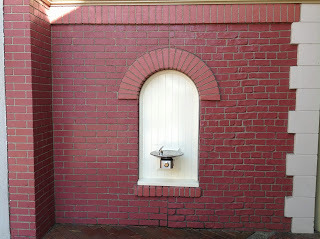A Pattern Language
 When we have experienced a space that has a higher degree of life, how can we explain why we feel that way to others? How do we express the positive qualities in such a way that they can easily be shared? In A Pattern Language: Towns, Buildings, Construction, published in 1977, Alexander (withco-authors Sara Ishikawa and Murray Silverstein) suggested a system of fundamental building blocks that can be combined to create wonderful spaces that “make people feel alive and human.” This system consists of 253 patterns that lead to rooms, streets, and districts that work. Each pattern consistsof a specificproblem that occurs over and over again in our environment.The pattern provides “the core of the solution” and is described so that “you can use this solution a million times over, without ever doing it the same way twice.” Thepatterns are numbered andarranged within a hierarchy that stretches from a macro lookat large regions down to a micro look at the proper placementfor climbing plants.Each pattern isscored by importance with up to two asterisks. There are approximately one-third ofthe patterns marked with two asterisks. Two asterisks suggest the connection between place and experience is an “invariant.” Those patterns are a “deep and inescapable property ofa well-formed environment.” Patterns marked with one asterisk are valid but subject tomore research. Patterns that are unmarked are based on empirical data.When used properly, the patterns can be used like an alphabet; various combinations provide the abilityto tell an infinite variety of stories. As outlined in A Pattern Language, the combination of patterns can provide an infinite array of solutions for environmental design.What do I mean by combining patterns? Let me use this example. When preparing a gourmet meal, you must combine theingredients just right. Addingtoo much of the wrong thingor mixing the ingredients improperlywill spoil the result. When you get it right, the result is something that is greater than the sum of its parts. That is when you have achieved ahigher degree of life. The urban plannerand architect want to achieve the same result with the built environment that a great chefachieves with the meal.
When we have experienced a space that has a higher degree of life, how can we explain why we feel that way to others? How do we express the positive qualities in such a way that they can easily be shared? In A Pattern Language: Towns, Buildings, Construction, published in 1977, Alexander (withco-authors Sara Ishikawa and Murray Silverstein) suggested a system of fundamental building blocks that can be combined to create wonderful spaces that “make people feel alive and human.” This system consists of 253 patterns that lead to rooms, streets, and districts that work. Each pattern consistsof a specificproblem that occurs over and over again in our environment.The pattern provides “the core of the solution” and is described so that “you can use this solution a million times over, without ever doing it the same way twice.” Thepatterns are numbered andarranged within a hierarchy that stretches from a macro lookat large regions down to a micro look at the proper placementfor climbing plants.Each pattern isscored by importance with up to two asterisks. There are approximately one-third ofthe patterns marked with two asterisks. Two asterisks suggest the connection between place and experience is an “invariant.” Those patterns are a “deep and inescapable property ofa well-formed environment.” Patterns marked with one asterisk are valid but subject tomore research. Patterns that are unmarked are based on empirical data.When used properly, the patterns can be used like an alphabet; various combinations provide the abilityto tell an infinite variety of stories. As outlined in A Pattern Language, the combination of patterns can provide an infinite array of solutions for environmental design.What do I mean by combining patterns? Let me use this example. When preparing a gourmet meal, you must combine theingredients just right. Addingtoo much of the wrong thingor mixing the ingredients improperlywill spoil the result. When you get it right, the result is something that is greater than the sum of its parts. That is when you have achieved ahigher degree of life. The urban plannerand architect want to achieve the same result with the built environment that a great chefachieves with the meal.Alexander ’s book teaches us how to discern or create clarifying patterns within complex mixtures. Pattern recognition isa crucial skill for an architect or urban plannerwho must create a highly ordered environment amid many competing and frequently nebulous design considerations.
Read more: Walt and the Promise of Progress City
Published on September 25, 2013 04:00
No comments have been added yet.



